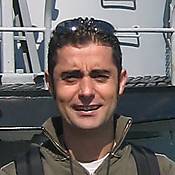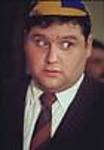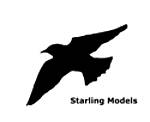You are viewing the archived version of the site.
Go to modelshipwrights.com for the current dynamic site!
Go to modelshipwrights.com for the current dynamic site!
1⁄700HMS Liverpool
7
Comments
"MSW Crewmate Stefano Matteucci (bauherr) sends in his first submission, a fine photo gallery of HMS Liverpool, in this Build Feature!"
HMS Liverpool is the tenth of the class of Type 42 Destroyers and the seventh ship to bear the name. She was built by Cammell Laird of Birkenhead and was launched on 25 September 1980 by Lady Strathcona, wife of the then Minister of State for Defense.
(from the Royal Navy website)
Both waterline and full hull options are given. There is also a fine helo included (not used in my model), with optional PE blades. Some experience is needed only for assembling the magnificent PE radar antenna, but the result may be absolutely astonishing, in this scale!
However, since the perfect kit doesn’t exist (till now), I encountered two problems:
1. The PE yards for the foremast (immediately behind the radar) are represented in the instruction sheet (point 3 - pieces MA13 and MA14) but there is no trace of them in the PE fret. Since I cut away the plastic parts from the mast as per instructions, I had to scratchbuild the yard. Probably, my inexperience in building ships led me to a decisive mistake, such as trusting too much in instructions.
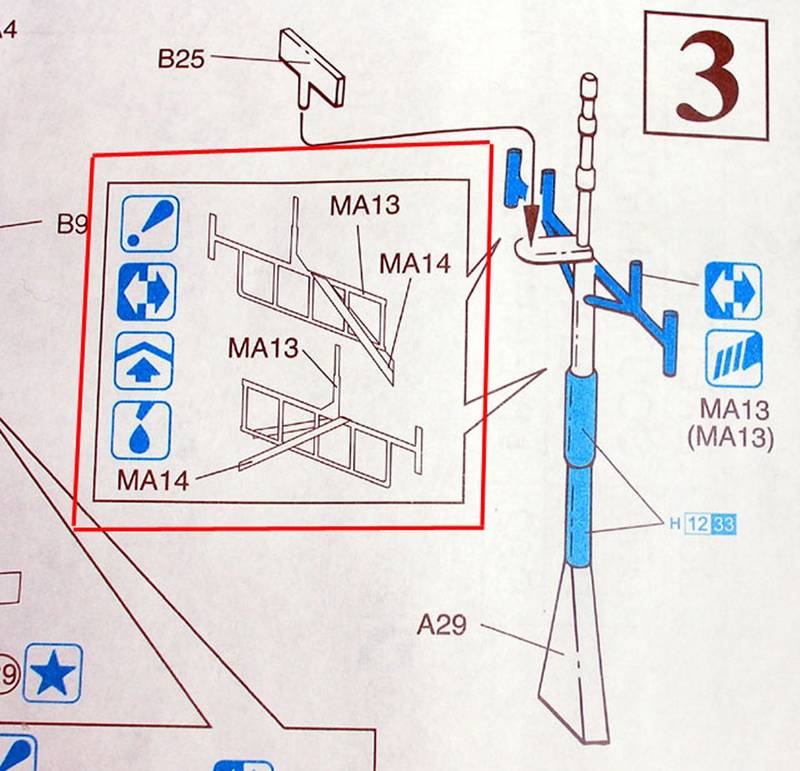
2. The final “look” of my Liverpool is very different from the box-art of the kit, from recent RN pictures and finally from the Christer Johansson (ROY) model. I was surprised since my Liverpool looked like the HMS Sheffield !!! Luckily, it may reproduce an earlier configuration of the Liverpool destroyer, as documented in MaritimeQuest website. In my opinion, it should be possible to obtain a recent configuration of the ship with minor scratchbuild, using parts given in sprues A and B:
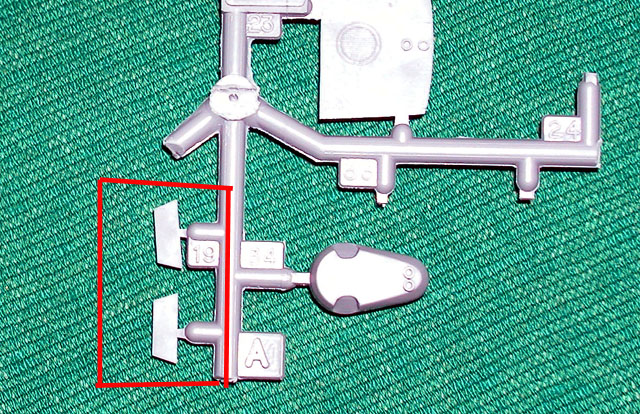
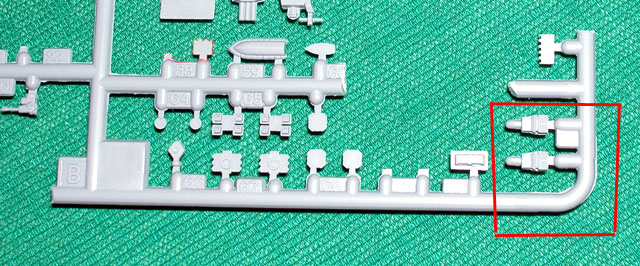
To this end, parts indicated to be cut away in the instructions sheet (point 11) have to be kept alive:
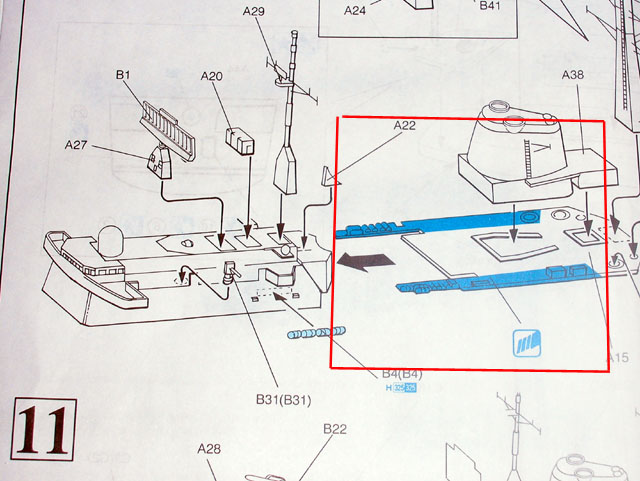
In this light, cuts reported in point 7 probably are also to be avoided.
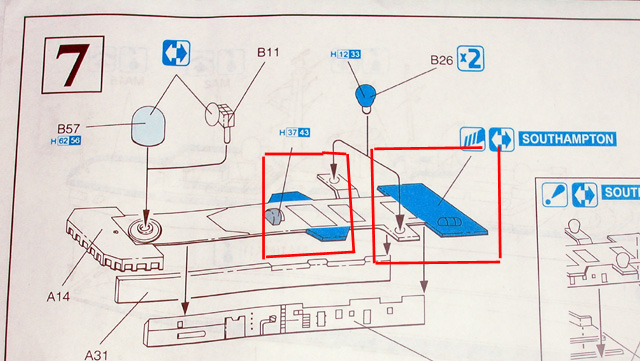
Indeed, the rear part of A14 should be kept also for earlier configurations (I added a plasticard piece to recover the cut).
The model is painted using Gunze and Tamiya acrylics by airbrush, both for large parts or subassemblies and for small parts, before detaching them from the sprue. Small raised details are painted by an ordinary brush.
For the weathering, I used a very common technique either for tanks or planes (indeed, till now I thought to be an aircraft modeler). After a layer of gloss clear, the model was slightly weathered with the usual diluted black-brown oil mix, followed by a soft dry brushing in light grey. A flat clear layer sealed the model. As a last touch, the anchor chain and the gun was highlighted by a soft graphite pencil.
There is no rigging, because any solution could appear out of scale (for instance, a black painted 0,005" fishing wire).
The massive part (water) is made of plaster, poured into a mold coated by a kitchen aluminum foil, wrinkled and then stretched. This technique is described by Omami in the Tech Tips section of the IPMS Stockholm website (www.ipmsstockholm.org). When upside down, the plaster surface in contact with the aluminum foil reproduces a slightly choppy sea.
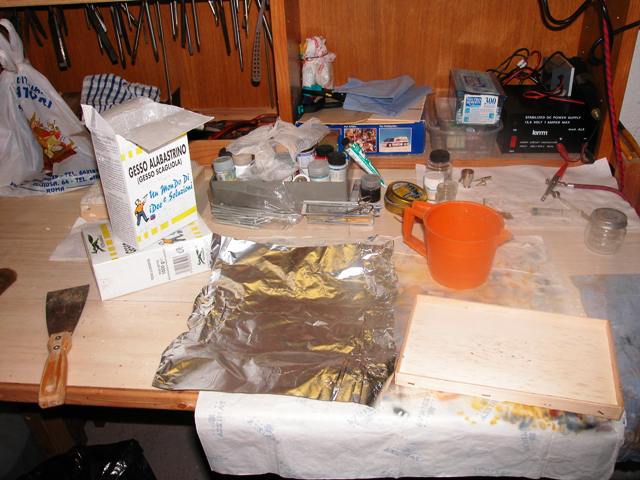
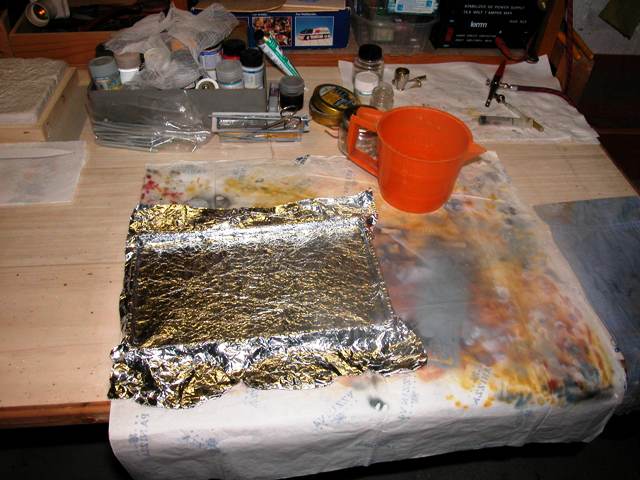
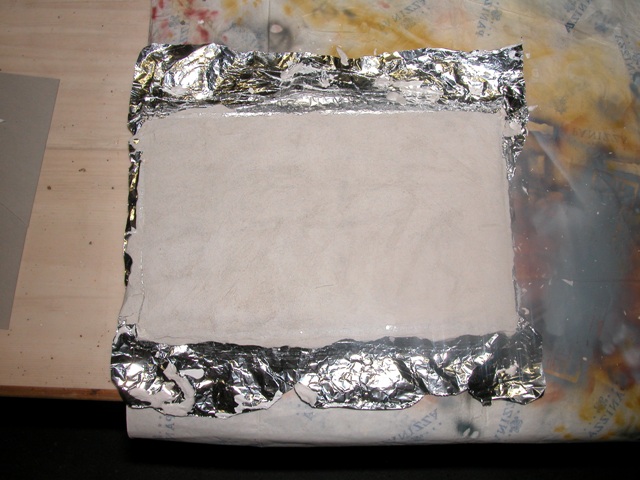
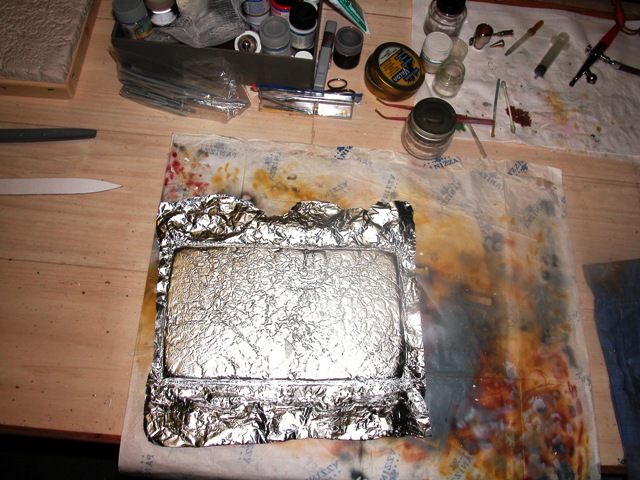
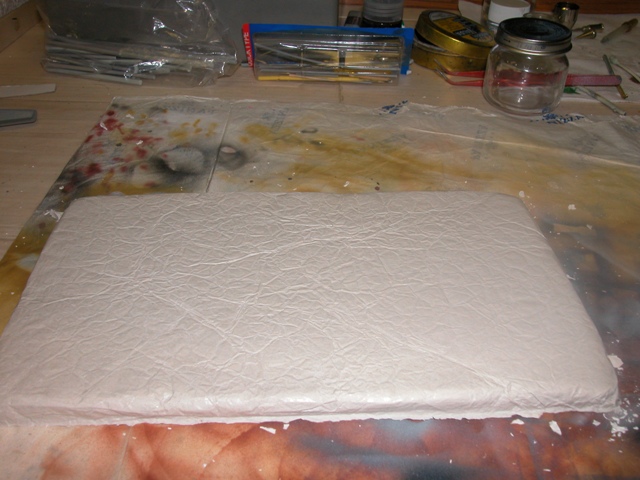
At that point, only waves caused by the ship motion have to be added. To this end, the bow, side and wake waves have been reproduced by acrylic gel for artists spread on the plaster base, around the waterline ship profile (see the Carl Musselman – Carlomaha – method, well known to all the MSW mates).
The last touch is the wooden frame around the sea base.
Finally, a great kit, very pleasant to build !
References
http://www.royalnavy.mod.uk/server/show/nav.1630
http://www.hazegray.org/navhist/rn/destroyers/type42/
http://www.maritimequest.com/warship_directory/great_britain/pages/destroyers/hms_liverpool_d92_page_1.htm
http://www.globalsecurity.org/military/world/europe/type42-gallery.htm
The vessel...
(taken from the Royal Navy website) The Type 42 Destroyers form the backbone of the Royal Navy's anti-air capability. They are equipped with the Sea Dart medium range air defense missile system, which in its primary role is designed to provide area air defense to a group of ships, although it is also effective against surface targets at sea. In addition to their role as an air defense platform the Type 42 Destroyers operate independently carrying out patrol and boarding operations, recently enforcing UN embargoes in the Gulf and the Adriatic as well as providing humanitarian assistance in Montserrat and East Timor.HMS Liverpool is the tenth of the class of Type 42 Destroyers and the seventh ship to bear the name. She was built by Cammell Laird of Birkenhead and was launched on 25 September 1980 by Lady Strathcona, wife of the then Minister of State for Defense.
(from the Royal Navy website)
Building the model
The model is made from the Dragon's 1/700 HMS Liverpool, premium edition (n. 7069). It is built completely OOB, exactly following the instructions sheet. The result is a representation of the early configuration of the vessel (about 1983). The kit is really beautiful and the assembly is very easy.Both waterline and full hull options are given. There is also a fine helo included (not used in my model), with optional PE blades. Some experience is needed only for assembling the magnificent PE radar antenna, but the result may be absolutely astonishing, in this scale!
However, since the perfect kit doesn’t exist (till now), I encountered two problems:
1. The PE yards for the foremast (immediately behind the radar) are represented in the instruction sheet (point 3 - pieces MA13 and MA14) but there is no trace of them in the PE fret. Since I cut away the plastic parts from the mast as per instructions, I had to scratchbuild the yard. Probably, my inexperience in building ships led me to a decisive mistake, such as trusting too much in instructions.

2. The final “look” of my Liverpool is very different from the box-art of the kit, from recent RN pictures and finally from the Christer Johansson (ROY) model. I was surprised since my Liverpool looked like the HMS Sheffield !!! Luckily, it may reproduce an earlier configuration of the Liverpool destroyer, as documented in MaritimeQuest website. In my opinion, it should be possible to obtain a recent configuration of the ship with minor scratchbuild, using parts given in sprues A and B:


To this end, parts indicated to be cut away in the instructions sheet (point 11) have to be kept alive:

In this light, cuts reported in point 7 probably are also to be avoided.

Indeed, the rear part of A14 should be kept also for earlier configurations (I added a plasticard piece to recover the cut).
The model is painted using Gunze and Tamiya acrylics by airbrush, both for large parts or subassemblies and for small parts, before detaching them from the sprue. Small raised details are painted by an ordinary brush.
For the weathering, I used a very common technique either for tanks or planes (indeed, till now I thought to be an aircraft modeler). After a layer of gloss clear, the model was slightly weathered with the usual diluted black-brown oil mix, followed by a soft dry brushing in light grey. A flat clear layer sealed the model. As a last touch, the anchor chain and the gun was highlighted by a soft graphite pencil.
There is no rigging, because any solution could appear out of scale (for instance, a black painted 0,005" fishing wire).
Building the sea base...
The base is a mix of two different techniques.The massive part (water) is made of plaster, poured into a mold coated by a kitchen aluminum foil, wrinkled and then stretched. This technique is described by Omami in the Tech Tips section of the IPMS Stockholm website (www.ipmsstockholm.org). When upside down, the plaster surface in contact with the aluminum foil reproduces a slightly choppy sea.
At that point, only waves caused by the ship motion have to be added. To this end, the bow, side and wake waves have been reproduced by acrylic gel for artists spread on the plaster base, around the waterline ship profile (see the Carl Musselman – Carlomaha – method, well known to all the MSW mates).
The last touch is the wooden frame around the sea base.
Finally, a great kit, very pleasant to build !
References
http://www.royalnavy.mod.uk/server/show/nav.1630
http://www.hazegray.org/navhist/rn/destroyers/type42/
http://www.maritimequest.com/warship_directory/great_britain/pages/destroyers/hms_liverpool_d92_page_1.htm
http://www.globalsecurity.org/military/world/europe/type42-gallery.htm
Comments
Stefano,
Very nice looking ship. Thank you for sharing your water technique with us as well!
DEC 02, 2008 - 03:25 AM
Excellent work and very interesting to see another variation of the foil technique. Also good to see those instructions corrections (I'm very familiar with stuff like that ). Great job!
DEC 02, 2008 - 04:29 AM
Ciao Stefano!
Very nice presentation of the HMS Liverpool and a great water tutorial!
I also liked the fact that you noticed the instructions mistake!
Congratulations on a fine display!
Auguri,
Rui
DEC 02, 2008 - 07:33 AM
A beautiful model and base. I especially like the subtle aqua-green water tones.
--Karl
DEC 02, 2008 - 07:38 AM
great build! love the water base... and an extra thank you for documenting your water technique and the instruction errors... cheers
DEC 03, 2008 - 07:23 AM
Copyright ©2021 by Stefano Matteucci. _OPINIONS Model Shipwrights, KitMaker Network, or Silver Star Enterrpises. Images also by copyright holder unless otherwise noted. Opinions expressed are those of the author(s) and not necessarily those of Model Shipwrights. All rights reserved. Originally published on: 2008-12-02 00:00:00. Unique Reads: 5208


































